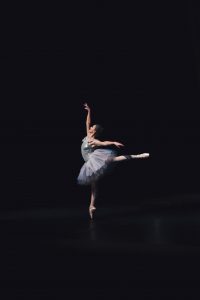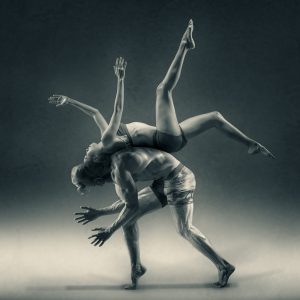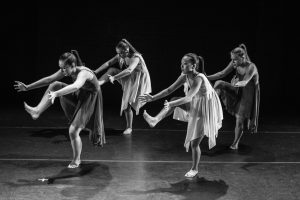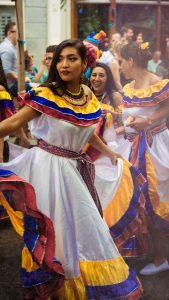The first choreographic process I will be looking at is the Three-Phase Process. This process describes a basic layout for choreographing that can expand and be built upon to become many other approaches depending on the choreographer. The Process is laid out in phases (as the name suggests). These include
Gathering the Movement Material
Developing the Movement into Phrases
Creating the Final Structure.
First, the choreographer will gather the material. This means that the choreographer will choose or create the movements and technique that they will include in their phrases and their overall piece. The movements that will go into a dance depends on the choreographer and each piece they create will require a different choice of movements depending on the style or meaning needing to be portrayed in the dance.
To choose the movements that will go into their piece, some choreographers may choose from a basis of technique and create variations of works used in classes and performances. They may take another choreographer’s piece and rearrange or introduce new steps to make it their own. This also allows choreographers to merge styles and create their own piece influenced by another. This approach to gathering movement is often used in ballet, jazz, or tap where set movements already exist.

Other choreographers, will implement their own style and create their own set of movements and vocabulary to create a dance but they will still draw from others. Choreographers that have used this approach have developed their own techniques. Some of these artists include modern dancers Martha Graham and Ruth St. Denis. Each had drawn from mentors and influences but created their own technique to suit their creative style.

Next, the choreographer must turn the chosen movements into phrases. The Brittannica Encyclopedia describes a phrase of dance as being a “series of movements bound together by a physical impulse or line of energy that has a discernable beginning and end” (Mackrell, 2019). Within a phrase, the movements must link and blend together to create a consistent flow of movement. Some phrases often show a pattern. Patterns can be visible and recognized through length, shape, and rhythm. Most phrases will attempt to replicate or completely diverge from the accents within a piece of music and most phrases will sinc with a phrase within the music. By using these factors and developing dynamics within the phrase, phrases can be recognized within a dance and can be repeated or expanded upon by using different qualities such as embellishing a movement or even reversing the entire phrase.

Lastly, The choreographer will put together the final structure. The overall structure of the dance is dependent on a variety of factors. It depends on the purpose of the dance, wether the dance should include a series of events and characters as if it needs to tell a story or even part of a traditional piece that must follow a strict order and requirements. Music also plays a part as the tempo or mood of the music can set a theme for a dance or what kind of movements should be used, whether it be slow or fast, or soft or sharp. The structure of a dance may also come from a continuous development of movements or phrases as the choreographer slowly develops a piece, using one movement to indicate what the next shall be. Other aspects of the dance that can be conceived this way include the number of performers, the spacing, or the story that is told. The structure and performance will also depend on the traditional style of the piece being created. For example, ballet pieces are often performed as continuous narratives while modern pieces are usually performed as a compilation of short pieces (Mackrell, 2019).

I think that this process description is a good basic layout for any choreographer when developing a new piece. It provides a logical sequence to follow to help put something together. However, I don’t think that a chronological sequence is for everyone. some people like to start in the middle or even at the end by developing the structure first. Each process and approach depends on the artist.
For Further Reading Visit:
https://www.britannica.com/art/dance/The-three-phase-choreographic-process
Research from:
Brittanica Encyclopedia;
Article by Judith R. Mackrell (October 16th, 2019)

Leave a Reply
You must be logged in to post a comment.